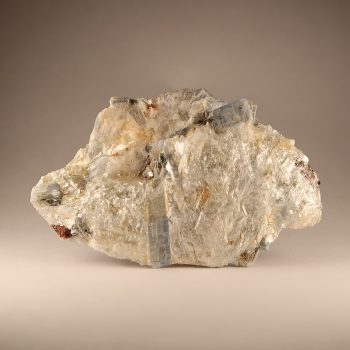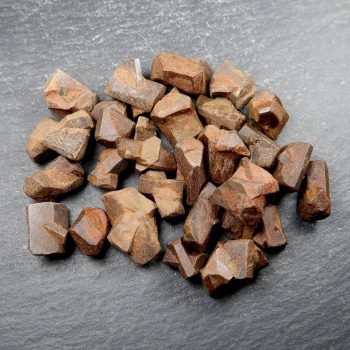Staurolite
Staurolite is a mineral that is composed of iron aluminium silicate. It has a unique cross-like shape.
Because of this, staurolite is sometimes referred to as “fairy stone” or “cross stone”, and is sometimes used in jewellery and other decorative objects.
Showing all 2 results
Information about Staurolite
Staurolite is a silicate mineral known for its distinctive cross-shaped (twinning) crystal formations, often appearing as “fairy crosses”.
It typically forms prismatic, elongated crystals with a brownish-red, reddish-brown, or dark brown colour.
The crystals often exhibit a vitreous to resinous luster and are opaque to translucent on thin edges. Its most notable feature is the penetration twinning, forming perfect 60° or 90° cross shapes, making it a popular collector’s specimen.
Uses and History
Staurolite is primarily valued as a collector’s mineral due to its unique crystal habit. It’s also used as an index mineral in metamorphic petrology to gauge the temperature and pressure conditions of rock formation.
The name “staurolite” comes from the Greek word “stauros”, meaning “cross,” referencing its characteristic twin formations.
It is the official state mineral of the US state of Georgia, where it is commonly found in Fannin County. It is also found in Fairy Stone state park in Patrick County, Virginia – the park is named after a local name for staurolite, from a legend regarding fairy wings.
Mineralogy
Dark reddish brown to black-brown, yellowish brown, sometimes pinky-brown, yellow-brown, blue-brown.
Hazards and Warnings
Mineral collectors should wash their hands after handling specimens, to avoid any exposure to potential toxins.
Almost all rocks, minerals (and, frankly, almost all other substances on earth) can produce toxic dust when cutting, which can cause serious respiratory conditions including silicosis.
When cutting or polishing rocks, minerals, shells, etc, all work should be done wet to minimise the dust, and a suitable respirator or extraction system should be used.
Translations
Arabic:
Hindi:
Portuguese:
- Estaurolite
Bengali:
Indonesian:
Punjabi:
English:
Italian:
Russian:
- Ставролит
French:
- Staurotide
Japanese:
- 十字石
Spanish:
- Staurolith
German:
- Staurolith
Korean:
Thai:
Gujurati:
Mandarin Chinese:
- 十字石
Urdu:


